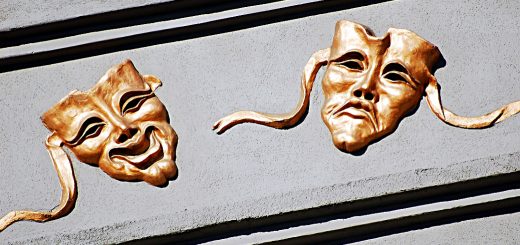Richard Driehaus – Bottom Up Investing

Today’s post is a profile of Guru investor Richard Driehaus, who appears in Jack Schwager’s book New Market Wizards. His chapter is called The Art of Bottom Up Investing.
Contents
Richard Driehaus
Richard Driehaus is a money manager and philanthropist who we came across when we looked at momentum screens.
He appears in Jack Schawger’s book “New Market Wizards”.
- His chapter is called The Art of Bottom Up Investing
Early days
Driehaus got hooked on the stock market as a teenager, when he
Discovered the folly of following the recommendations of financial columnists.
He read all the financial magazines and newsletters that he could find, and began to develop his own market philosophy.
- His favourite letter was John Herold’s America’s Fastest Growing Companies, because:
Herold’s approach of focusing on earnings growth made a lot of sense to me.
Herold displayed charts that superimposed a stock’s price and its earnings over a ten-year period.
These charts demonstrated that a stock’s price was in harmony with its long-term earnings growth, and became a very powerful image to me.
After college he became a research analyst, but became frustrated by seeing his best recommendations ignored (because their PE multiples were too high).
Many of the best growth stocks have high multiples and are psychologically difficult to buy.
In 1970 Driehaus got his chance to manage money, at A. G. Becker. In his three years there he was rated in the top 1% of all portfolio managers.
- After working for another couple of firms his started his own in 1980.
Performance
In the twelve years to Schwager’s interview, Driehaus averaged an annual net return of more than 30%, almost double the S&P 500 return of 16.7%.
- One dollar invested in Driehaus’s Small Cap Fund would have grown to almost $25.
Driehaus focuses on small caps, but the Russell 2000 index was up only 13.5% annually over the same period.
As well as his Small Cap fund, Driehaus runs a Bull and Bear (market neutral) Fund.
- In its first two years, this returned 67% and 62% (minus a 20% perfomance fee).
Trading style
Driehaus looks for:
Accelerating sales and earnings, high relative strength, institutional sponsorship, and proprietary products in a rapidly expanding market.
Some portfolio management decisions are investment oriented and some are trading oriented. There are a lot of different inputs that can affect a decision, and there are no universal decision rules.
One of the first stocks Dreihaus bought was Bandag, at $37. He sold at $47 and watched it rise to $240.
It’s not that easy to buy back a good stock once you’ve sold it. There’s great advantage and comfort to being a long-term investor.
If there’s a large move on significant news, either favorable or unfavorable, the stock will usually continue to move in that direction. You have to bite the bullet and buy the stock, but it’s hard to do.
Yet at the same time:
You have to be willing to turn over your portfolio more frequently than the conventional norm to get superior performance.
You want the fastest horse, even if your first horse is still trotting in the right direction. More importantly, I want to make sure I get off the horse if it starts heading in the wrong direction.”
I don’t hold on to stocks with deteriorating fundamentals or price patterns.
We probably have more losers than winners, but we cut our losses.
Market conditions
You can’t make a harvest in the wintertime. Sometimes it’s wintertime for small cap, high growth stocks.
Charts
I look at the total image. It’s more the visual impression than whether the stock breaks a particular point.
Technical analysis is vital for success.
Charts give you a very unemotional insight into a stock in an otherwise emotional market.
I won’t buy a stock when it’s dropping even if I like the fundamentals.
I like to see the stock’s relative strength in the top 10 percent of the market, or at least the top 20 percent.
PE ratios
The P/E ratio might show statistical significance for broad stock groups, but for the type of stocks we buy, it’s usually not a key variable.
Stocks with long-term, high-growth potential often sell at higher multiples, particularly if they’re newer companies.
The P/E ratio really measures investors’ emotions, which swing wildly from fear to greed, and is only significant at extremes.
Analysts
There’s a definite market inefficiency here. The more the street covers a stock, the less opportunity there is.
Risk and volatility
People confuse short-term volatility with long-term risk. The longer the time period, the lower the risk of holding equities.
People focus too much on the short term-week-to-week and month-to-month price changes and don’t pay enough attention to the long-term potential.
For many investors, the lack of sufficient exposure to high-returning, more volatile assets is their greatest risk.
Without significant price movement, you can’t achieve superior gains.
Buy high
I believe that far more money is made buying high and selling at even higher prices.
That means buying stocks that have already had good moves and have high relative strength-that is, stocks in demand by other investors.
I would much rather invest in a stock that’s increasing in price and take the risk that it may begin to decline than invest in a stock that’s already in a decline and try to guess when it will turn around.
Do what is right, not what is comfortable.
Market timing
The penalty for being out of the market on the wrong days is severe.
Human nature being what it is, those are exactly the days that most people are likely to be out of the market.
Philosophy
The essential element is having a core philosophy.
A trading philosophy is something that cannot just be transferred from one person to another. It’s something that you have to acquire yourself through time and effort.
Without a core philosophy you’re not going to be able to hold on to your positions or stick with your trading plan during really difficult times.
Conclusions
This is another entertaining interview, and Driehaus is a quote machine.
For once, his philosophy is close to that of many UK private investors that I come across – buy small stocks with good earnings growth.
- Driehaus’s basic point is that price follows growth, so you should buy the stocks with the best potential earnings growth.
But that’s such a simple approach that execution must be crucial – so I’m not sure how much we have learned.
- Certainly that you need to be prepared to buy firms that already have a high PE.
- Also that you need to Cut Your Losses, and indeed only buy stocks with positive price action (relative strength / momentum).
- Driehaus also looks for proprietary products in an expanding market, another rule that is applicable to many UK private investors.
- But he will buy on a strong reaction to positive news, which is very difficult for most people to do.
Schwager notes that a small percentage of big winners account for the most of Driehaus’s outperformance.
You don’t have to be right the majority of the time, but you do have to take advantage of the situations when you are right.
This means resisting the temptation to take profits after a stock has doubled – Let Your Profits Run.
- Another key point is that you need to develop your own philosophy, through research, practice, and (probably) painful experience.
Until next time.


















